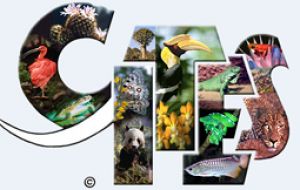MercoPress. South Atlantic News Agency
Sharks, sawfish, eels in WWF list of top ten endangered species

Ahead of the world's major meeting on wildlife trade WWF released its list of top ten species needing urgent global action to reduce threats from trade.
Delegates from 171 countries are expected to attend the Conference of the Convention on International Trade in Endangered Species (CITES), from 3-15 June in The Hague, The Netherlands. Some of the species on WWF's top ten priority list are among the most endangered. For example, the tiger and the Asian rhino have required constant and urgent action over the past decades because of ever-present, pervasive threats to their survival, including poaching and illegal trade. Others, particularly marine species, are on the list because their populations have declined massively in recent years due to global market demand. "CITES has been addressing the trade threat to some of these species for more than 30 years, with many successes, while others are new on the agenda," said Dr Susan Lieberman, Director WWF's Global Species Programme. "For some, there are new threats, others are new on the agenda due to changing trade dynamics in the global economy, while for yet others, organized criminal elements continue to ply their trade across the globe." "Whatever the problem," added Dr Lieberman, "nothing will change unless governments take this trade and its impacts on conservation and local people's livelihoods seriously." WWF's top ten "to do" list for the world's governments includes the following species: Porbeagle â€" Porbeagle shark is a powerful, medium-sized, highly migratory shark. There is international demand for, and trade, in its high-value meat and fins. It is also used as fertilizer. Spiny dogfishâ€" Spiny dogfish is a slender, smaller sized white-spotted shark that grows to about one metre long and travels in schools. It is found in cool, coastal waters worldwide. Known as rock salmon, it is used in fish and chips in the UK and as a smoked meat delicacy in Germany, called Schillerlocken. Sawfish â€" Populations of the seven species of sawfish have drastically declined. They are traded as live animals for public aquariums, and also for their fins and meat. Their distinctive saw-like snouts are sold as souvenirs and ceremonial weapons, while other body parts are used for traditional medicines. Tigers.â€" In addition to continuing threats from habitat loss and forest conversion, an old threat is about to re-emerge in China, which could put the last remaining tigers further at risk â€" the potential re-opening of trade from tiger 'farms'. WWF calls upon governments to take concerted action to stop all trade in tigers, particularly in China, and to improve enforcement efforts across Asia (e.g., India). Asian rhinos â€" Historically hunted for their horn, a prized ingredient in traditional Asian medicines, and devastated by the destruction of their lowland forest habitat, Asian rhino populations are now distressingly small. An upsurge in poaching over the last few is taking its toll even on populations that were thought to be stable. Red and pink coral â€" A jewel that comes from reefs and atolls, it is the most valuable of all the precious corals. Pink coral has been fished for over 5,000 years and used for jewellery and decoration. Over-harvesting and the destruction of entire colonies by bottom trawls and dredges have led to dramatic population declines. European eel â€" The European eel comes from coastal and freshwater ecosystems throughout Europe, including Mediterranean countries. Stocks have declined dramatically over the past several decades due to over fishing and poaching. There is significant international demand for this species, both for live juvenile eels (shipped from Europe to Asia) for rearing in aquaculture and for the highly valued meat of adults. Elephants â€" The ongoing poaching of elephants and illegal international trade in ivory is stimulated by rampant ivory sales in some countries, particularly in Africa and Asia. Despite previous CITES decisions, and valiant efforts of some countries, these markets persist. The time has come to put political will behind serious efforts to close down these illegal and unregulated ivory markets, the true driver of elephant poaching. Great apesâ€" Wild populations of great apes (gorillas, chimpanzees and orangutans), continue to decline drastically and are threatened by the combined effects of illegal trade in live animals (usually for pets), poaching for meat, disease and habitat disturbance, fragmentation and destruction. Bigleaf mahoganyâ€" This highly valuable South and Central American rainforest tree species was listed in CITES Appendix II in 2002, in response to population declines and high levels of illegal logging and trade. Only one country still exports large commercial quantities, Peru, and after five years, these problems continue, and concerted action is needed.




Top Comments
Disclaimer & comment rulesCommenting for this story is now closed.
If you have a Facebook account, become a fan and comment on our Facebook Page!